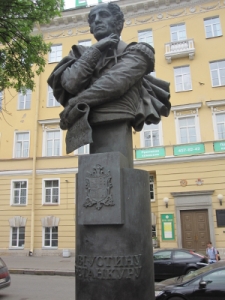 Xabier Añoveros, vice-president of the Royal European Academy of Doctors-Barcelona 1914 (RAED), has participated in the III International Event celebrating the institution, the European Congress of Interdisciplinary Research entitled “La evolución de la ciencia en el siglo XXI” (The evolution of science in the XXI century) and is celebrated until July 22 in different cities of the Baltic, with the presentation “Agustín de Bethencour, un ingeniero genial de los siglo XVII y XIX entre España y Rusia” (Augustine de Bethencour, a genius engineer of the seventeenth and nineteenth century between Spain and Russia). The work shows the importance of the aforementioned engineer as designer of the city of Saint Petersburg, by order of the czar, before the arrival of the delegation of the Royal Academy to the Russian city.
Xabier Añoveros, vice-president of the Royal European Academy of Doctors-Barcelona 1914 (RAED), has participated in the III International Event celebrating the institution, the European Congress of Interdisciplinary Research entitled “La evolución de la ciencia en el siglo XXI” (The evolution of science in the XXI century) and is celebrated until July 22 in different cities of the Baltic, with the presentation “Agustín de Bethencour, un ingeniero genial de los siglo XVII y XIX entre España y Rusia” (Augustine de Bethencour, a genius engineer of the seventeenth and nineteenth century between Spain and Russia). The work shows the importance of the aforementioned engineer as designer of the city of Saint Petersburg, by order of the czar, before the arrival of the delegation of the Royal Academy to the Russian city.
“Agustín de Betancourt has a scientific personality so outstanding that any detail of his life collects interest alone -assured Añoveros-. Betancourt develops his life and his work in four disparate countries: Spain, Russia, France and England. He lived his youth being already a recognized scientist and working of spy for the Spanish count of Floridablanca to ascertain the operation of the French technology. Years later he worked for the French government building an own steam engine that imitated the English in full bloom of the Industrial Revolution. Due to his poor relationship with Manuel Godoy in Spain, Betancourt decided to try his luck in Russia under the command of Tsar Alexander I and in 1812 built one of the most important bridges of Russia, Kamennoostrovski. Finally, he was the protagonist of the urbanization of cities as important as Saint Petersburg“.


